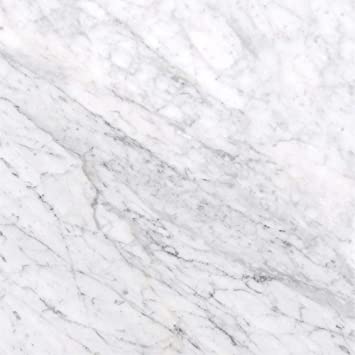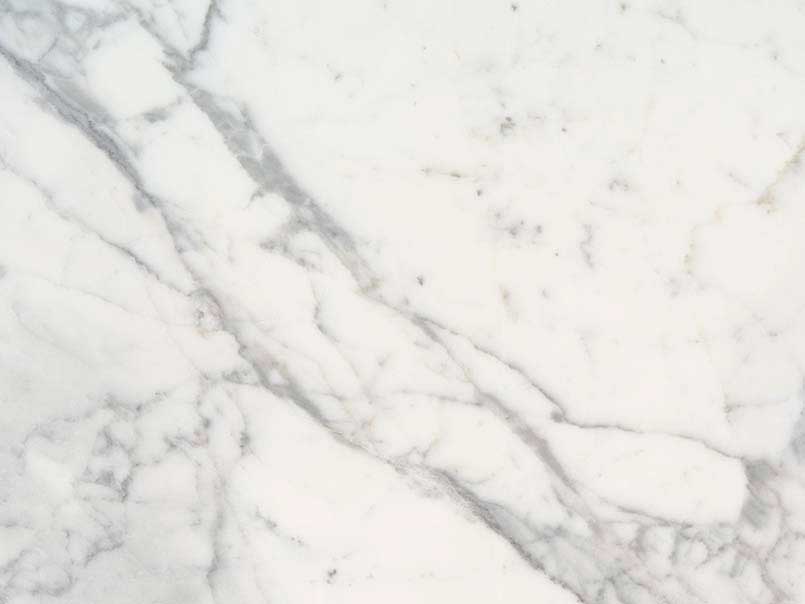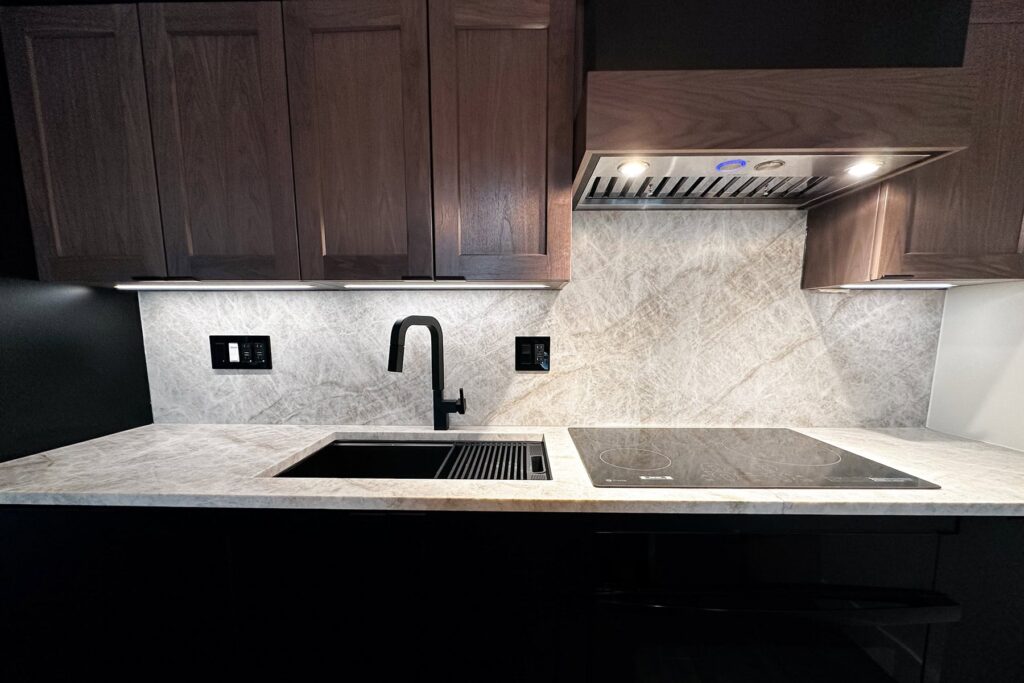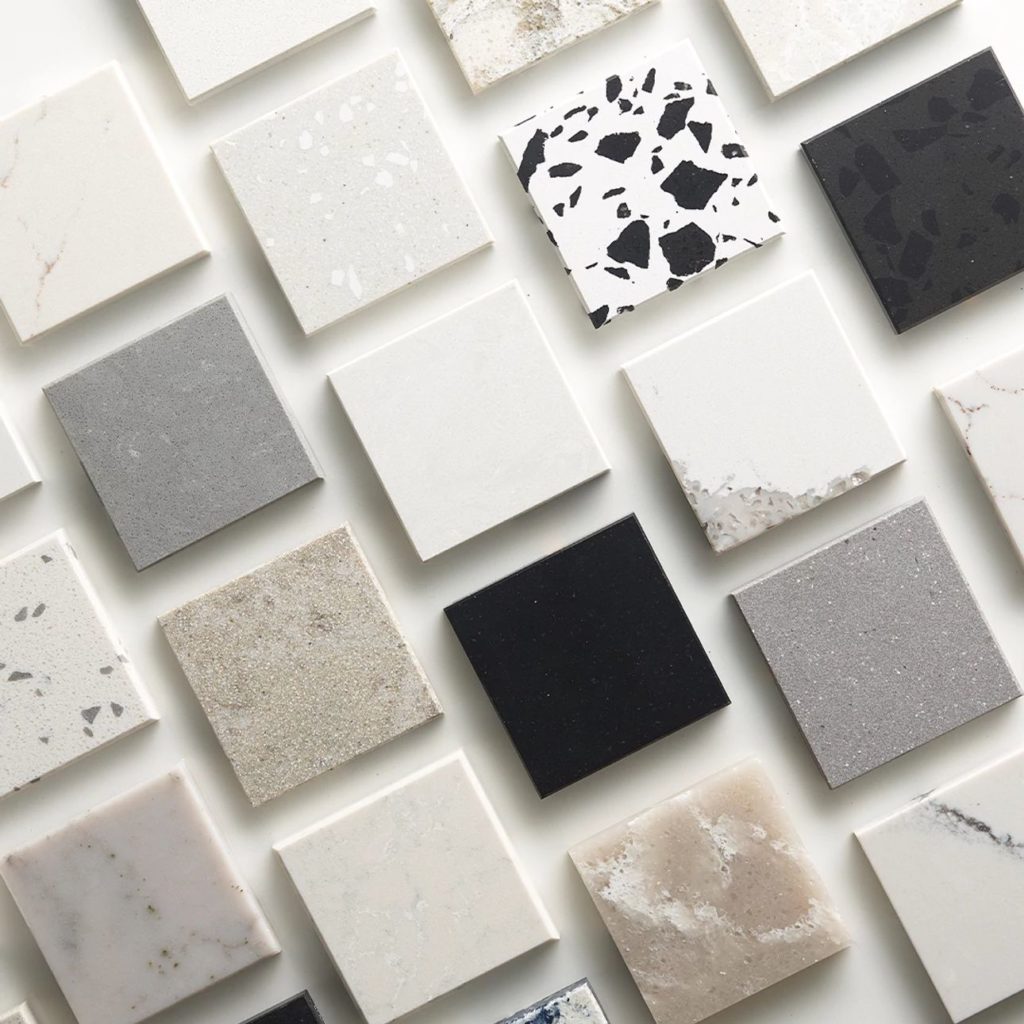Make no mistake, as similar as these two natural stones are, there are some key distinctions – find out what they are before buying.
Many homeowners are faced with the confusion that comes along with differentiating between Carrara and Calacatta marble, and they aren’t truly to blame for their confusion because the differences between Carrara and Calacatta marble are pretty subtle– it often takes an expert eye. Generally speaking, Carrara is a deeper gray and can also tend toward blue-gray with much softer veining, while Calacatta has a field that’s bright white, and a lot more variation in color than Carrara. The veins are thick and dramatic, and can range in color from gold to brown to beige to dark gray.
Still, Carrara vs. Calacatta marble: where are the differences?
Carrara Marble

Carrara marble is the most common marble found in Italy, and it’s named after the region it comes from – Carrara, Italy. Carrara marble is often classified as much softer looking than Calacatta because of its subtle light gray veining that can sometimes hue toward blue. It’s often characterized by soft feather grains that homeowners go crazy over.
It makes for an incredibly unique looking material, as each slab of Carrara marble is created from one block, and when installed by a professional hand, the grains and veins run together and create a stunning design pattern, which ensures no two Carrara marble surfaces have exactly the same design.
Calacatta Marble

Calacatta marble is often much whiter, a characteristic many homeowners and service professionals associate with luxury. It also comes from the same place in Italy, but Calacatta is usually much smoother than your typical Carrara marble. Because of its classic, timeless look, Calacatta marble has been a mainstay in bathrooms and as kitchen countertops for years. If you enjoy more dramatic veins in your natural stone, then Calacatta may be the right option for you.
Carrara Marble Bathroom
While it looks incredible, keep in mind that if you also have a marble sink you’re going to spend a lot of time cleaning and wiping it down – you don’t want to let all the moisture sit there.
If you keep up with the maintenance, then it should look great for a long time, rather than dull and fade in a pretty short time. For this reason, this type of material is best kept to the countertop, but even that will be water prone in a bathroom, so keep on top of it and your bathroom will look lustrous for years to come.
Calacatta Marble Bathroom
While Calacatta marble is expensive and some homeowners might hesitate to use it in the bathroom, when done well this natural stone can be a major highlight, taking a boring bathroom to the next level. Calacatta marble will lighten up any bathroom with a great backsplash, as long as you do the proper maintenance to safeguard against its porous nature by cleaning regularly and sealing frequently.
This type of marble seems to suck up most anything that falls on its surface, so you’re going to want to protect your investment by implementing a strict, no excuses cleaning schedule. Never use any acidic or other harsh cleaning agents on your Calacatta marble, as only products designed specifically for stone care should ever touch it. We recommend a highly versatile formulated marble and granite daily cleaner.
Carrara Marble Kitchen
Carrara marble adds a flair of style to any room, and this is especially true in the kitchen where it’s one of the most popular choices for kitchen countertops and islands. It’s light yet elegant color helps the kitchen area look more spacious. Take care of your marble by giving it the occasional polish as well as a strong seal, and it should remain pristine for years to come.
Usually, Carrara marble works better in the kitchen than Calacatta because it tends to be darker and more heavily veined, hiding all those coffee, wine, and food stains that are bound to occur. To prevent staining, seal the marble with a marble and granite sealer. Frequent use of a water-based stone sealer maintains maximum surface protection against staining, etching, and soil buildup, which can be helpful if you aren’t the world’s neatest person, as it will be a touch more forgiving than bright white Calacatta.
Calacatta Marble Kitchen
Obviously, Calacatta marble looks great on any surface or room, but when used in the kitchen it comes with greater maintenance responsibilities. While there really isn’t much of a difference between Carrara and Calacatta marble when it comes to being stain-proof, there is a difference between how visible these stains will be – remember, Calacatta tends to be whiter. They are both pretty porous, and nobody would classify either of them as low-maintenance.
However, if you’re insistent on using Calacatta marble in the kitchen, there are ways it can work. Just be vigilant about stains and always seal (and reseal!) your marble to prevent etching and premature aging. Things are often dropped in the kitchen, so there’s certainly a possibility that a heavy pan or kitchen tool could chip your precious marble.
There’s also quartzite countertops, which is also a natural stone like marble with beautiful colors.
Source: https://www.granitegold.com/the-difference-between-calacatta-carrara-marble-granite-gold/

